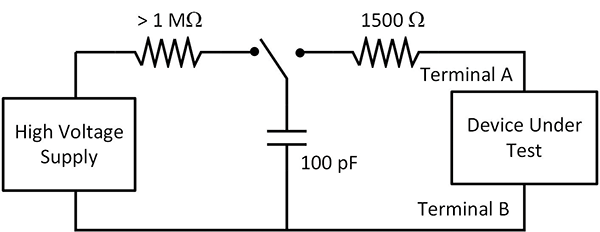Won't this circuit fail?
Yes, the circuit will fail without something that can limit the current.
The whole idea about surge (indirect lightning) and ESD protection is that there is something that limits the current. In the typical case of ESD it's the 1500 ohm resistor in the human body model: -

In the case of indirect lightning (as in ISO/EN 6100-4-5) it's a resistor of value 2 ohms to several tens of ohms. This value is chosen by the test house to be appropriate for the ports and wiring of the equipment being tested. A shielded/screened cable would be subject to a 2 ohm source and, if the intended rating of the equipment as 2 kV Level 3 below), this means that a peak current surge of 1000 amps is possible applied directly to the shield/screen: -

There is also the energy storage in the capacitor - this limits the duration and you can find that for very short bursts (say 1 ms) a powerful TVS can handle 5 kW or more. For even shorter bursts, it's tens of kW.
But won't this create a short circuit?
Well, not exactly a short circuit because a short circuit won't dissipate energy or power but, it'll be the clamping voltage of the TVS.
How to understand on the TVS diode behaviour during positive and
negative transients in this circuit when there is no series element to
limit its current?
You MUST have a series current limiting resistor and this is usually in the test equipment but, there are many cases where the designer will add extra resistor just to alleviate TVS stress.
I want to understand what happens when the BATT voltage goes above the
TVS diode clamping voltage. For both positive profile voltage and
negative profile voltage.
For the positive profile that has been explained above. For the negative profile I believe that D101 (rated at 400 volts) may fail due to reverse over-stress voltage.



